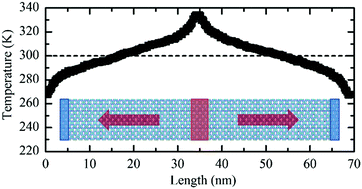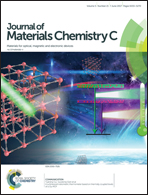Molecular dynamics study of thermal transport in a nitrogenated holey graphene bilayer
Abstract
Recent studies of graphene have spurred enormous interest in the exploration of novel 2D materials. Much attention has been paid to the opening of a direct bandgap in graphene, which enables its applications in field effect transistors (FET). Lately, a nitrogenated holey graphene structure with C2N stoichiometry has been synthesized, which exhibits extraordinary electrical properties. Heat dissipation plays a vital role in practical applications, and therefore its thermal properties need to be explored urgently. In this work, the basal-plane thermal conductivity (κ) and cross-plane interfacial thermal resistance (R) in a C2N bilayer structure are systematically investigated using the molecular dynamics (MD) method. The effects of several internal and external modulators, such as system temperature, longitudinal length, interlayer coupling strength and tensile strain on the calculated κ and R values are studied. The predicted κ for an infinite-length C2N bilayer is 80.0 W m−1 K−1 and the cross-plane R between C2N monolayers equals 3.4 × 10−8 K m2 W−1. The calculated thermal conductivities are found to decrease monotonically with temperature and tensile strain, while show negligible changes with coupling strength. On the other hand, both temperature and coupling strength can effectively reduce the interfacial thermal resistance with maximum R reductions amounting to 51% and 54%, respectively.



 Please wait while we load your content...
Please wait while we load your content...